From the trenches of the First World War to the Dieppe Raid to the D-Day landings of June 6, 1944, the Route of Remembrance pays tribute, through the memorial sites it reaches, to the 500,000 Canadian soldiers who fought to restore Freedom to the French people on two occasions during the 20th century.
Trace their journey through a visit to memorial sites from Juno to Vimy in memory of them.
Every year, several thousand Canadians visit the sites of the First and Second World Wars in Normandy and the Hauts-de-France. Many of them come to follow in the footsteps of their ancestors. This trip is considered a pilgrimage, which has lasted for several generations in Canada. It represents an indispensable tradition to perpetuate the memory.
For others, it is a symbolic journey that goes far beyond the duty to remember. It is a free citizen’s initiative, to honour the sacrifices, but also to better understand this unique past in Canada that was played out on French soil.
The creation of this itinerary from the North of France to the beaches of Normandy responds to a recurring need of Canadian customers, in search of a genealogical, memorial and identity tourism.
A joint project between Normandy and Hauts-de-France
The media impact of the 14-18 Centenary and the 75th anniversary of D-Day and the Battle of Normandy have reinforced the need for tourism professionals to strengthen the remembrance tourism offer on the Canadian market.
This is why the tourist offices of Arras Pays d’Artois, Lens-Liévin, Dieppe Maritime and Cœur de Nacre Juno Beach have decided to work together to create a Canadian Remembrance Route. This 400 km route (4h30) crosses Vimy, Beaumont-Hamel, Dieppe, Juno Beach, military cemeteries… places full of emotion, paying tribute to this generation sacrificed for Freedom.
Map of the Canadian Remembrance Route
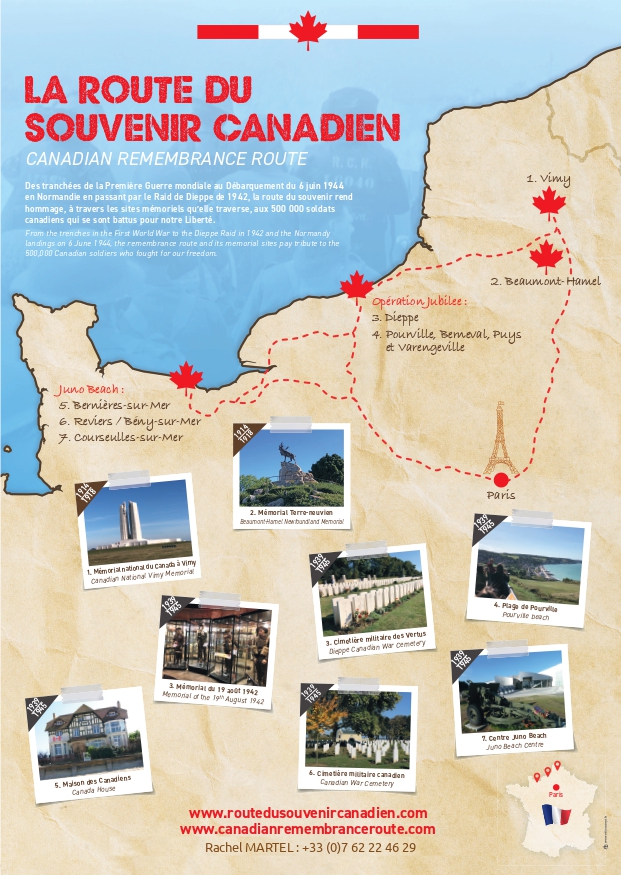
Commercial brochure
Press kit
History and main memorial sites
The sites of the First World War
The European tensions that would lead to the First World War in 1914 were far removed from the realities of Canadians at the time. When the British Empire declared war on the Austro-Hungarian Empire in August of that year, its overseas dominions, including Canada, also automatically entered the war. The country was still young, sparsely populated, and had a militia of only a few thousand reservists.
By the end of the conflict, Canada would have made a major contribution to the great victories of 1917, including Vimy, and 1918, standing out for its leadership and its agility in finding effective ways to emerge victorious from the battles. Some of the Canadian victories were stunning, and the Canadian troops, who at the beginning of the war were inexperienced and poorly organized, would transform themselves into a cohesive, incisive and formidable corps, attracting international press attention for the first time.
The First World War was the deadliest conflict in Canadian history, with as many as 66,000 Canadians losing their lives. This great national mourning, coupled with notable successes and victories, instilled a sense of patriotic pride in this generation of Canadians.
Two sites located in the Hauts-de-France region are presented as part of the Canadian Route of Remembrance:
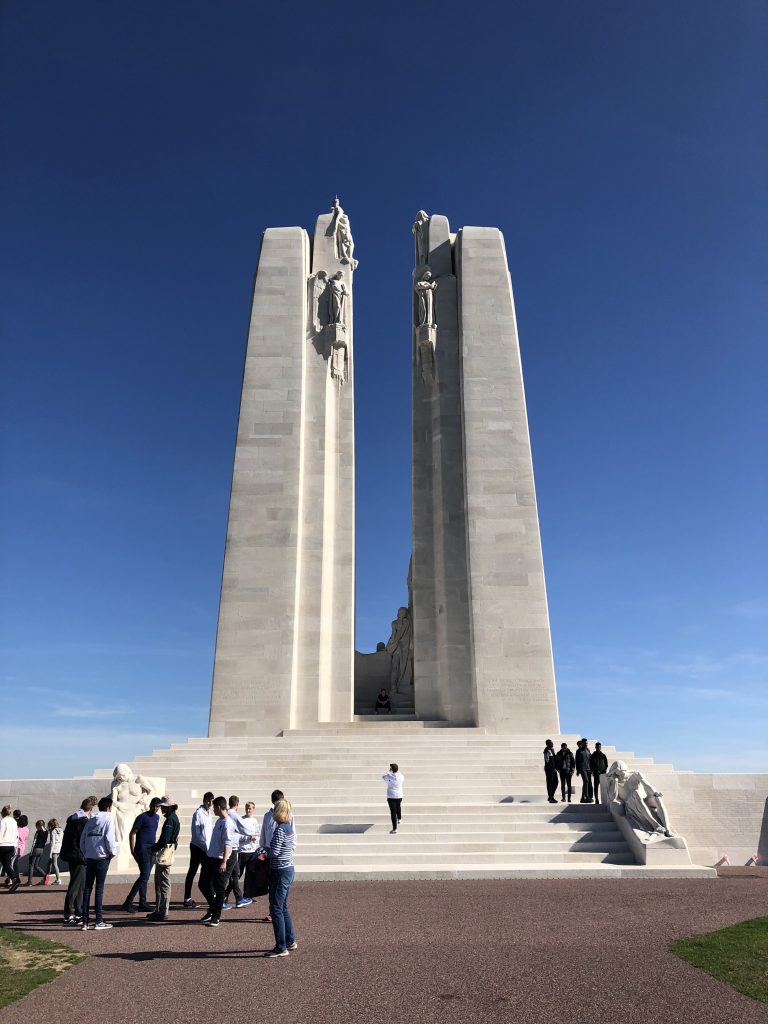

World War II sites
In the 1930s, in a context of political instability and social insecurity, Nazi Germany attempted to impose its domination on Europe. In September 1939, Canada declared a state of war and joined the Allies. The nation committed its human, industrial and financial resources to an ongoing war effort and mobilised the most powerful military force in its history. At that time, one million of Canada’s eleven million people served in the armed forces.
At sea, on land and in the air, Canada participated in the great campaigns that would lead to the surrender of Germany and the return to peace. 45,000 Canadians lost their lives during the Second World War, including 5,500 in the Battle of Normandy and 381 on D-Day.
The Route of Remembrance crosses sites marked by two major events of the Second World War: the Dieppe Raid of 19 August 1942 and the Allied landings of 6 June 1944.
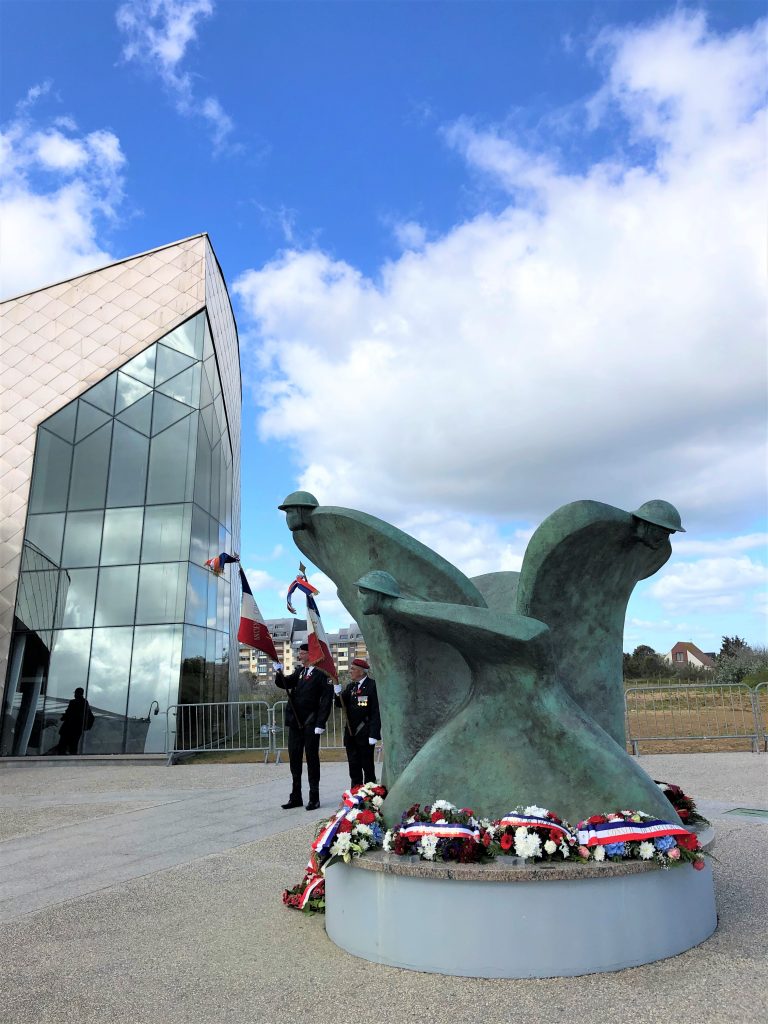
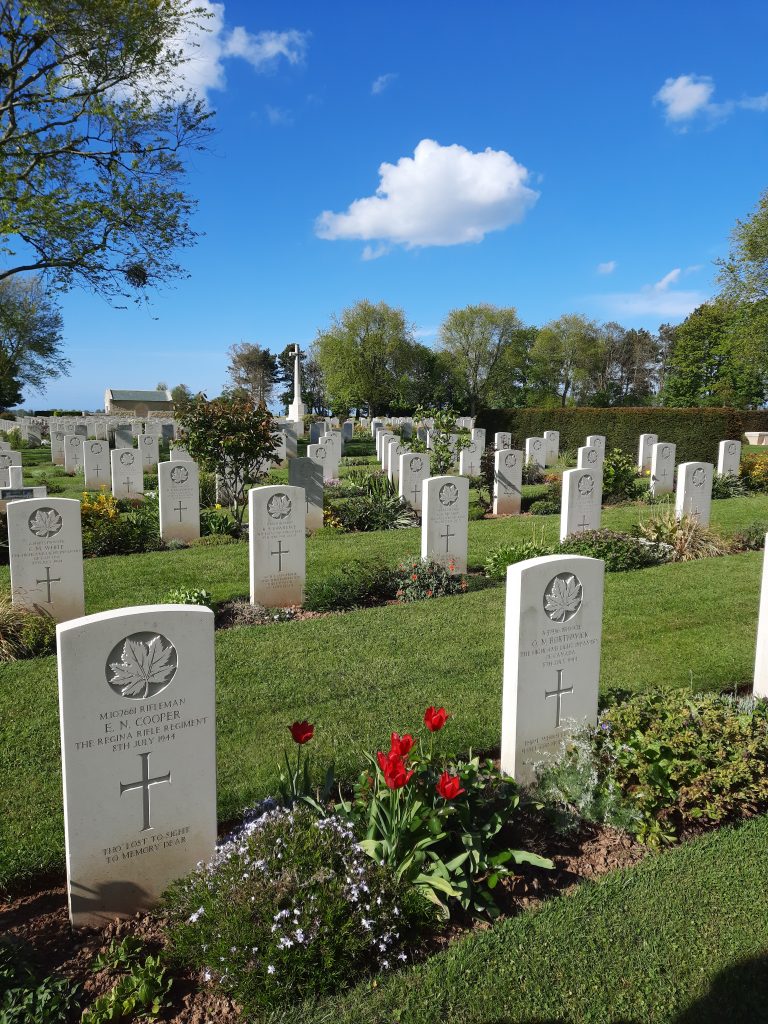
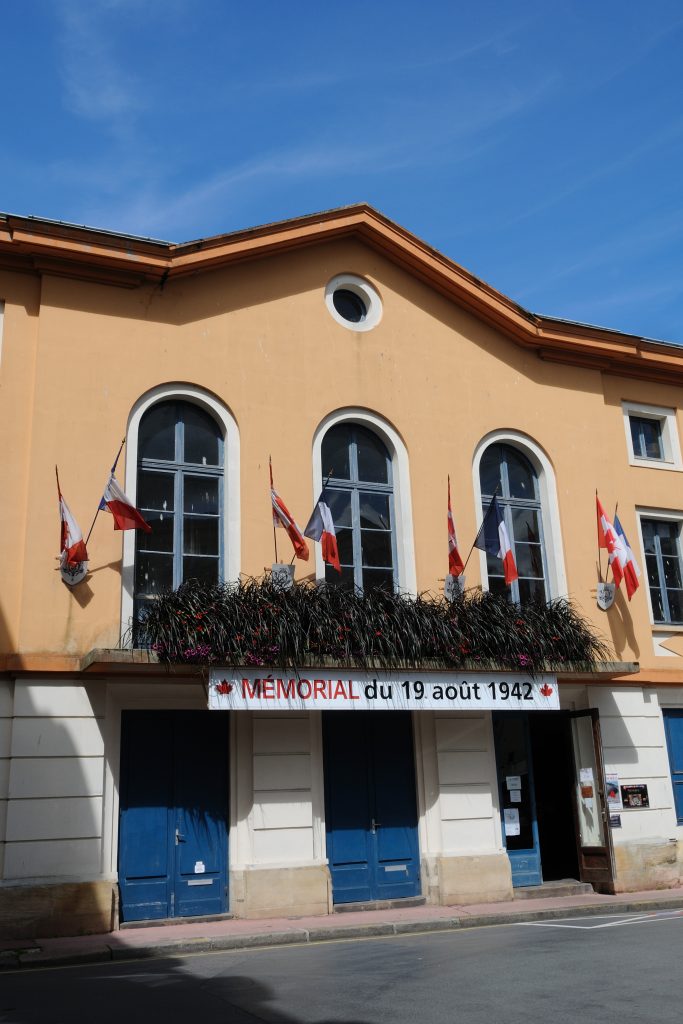
©YannPelcat
Contacts
Are you planning a trip to France? Would you like to discover the key sites of the Canadian Remembrance Route? Contact our teams to help you prepare your group trip:
Dieppe-Normandie Tourism
Rachel MARTEL, Marketing Officer
Jehan Ango Bridge
76200 Dieppe
+33 (0)7 62 22 46 29
r.martel@dieppetourisme.com
www.dieppetourisme.com
Cœur de Nacre Tourist Office Juno Beach
Nancy PICOT, promotion officer
72 bis rue Pasteur
14750 Saint-Aubin-sur-Mer
+33 (0)6 58 36 83 58
nancyp@coeurdenacretourisme.com
www.coeurdenacretourisme.com
Lens-Liévin Tourist and Heritage Office
Eléonore Francotte, Group manager
Hôtel de ville
16 place Jean Jaurès
62300 Lens
+33 (0)3 21 74 83 18
groupes2@tourisme-lenslievin.fr
www.tourisme-lenslievin.fr
Arras Pays d’Artois Tourist Office for Leisure and Conferences
Isabelle Pilarowski, Career Manager Wellington, Battle of Arras Memorial
Hôtel de Ville
Place des Héros BP 40049
62001 Arras Cedex
+33 (0)3 21 51 26 95
www.arraspaysdartois.com



